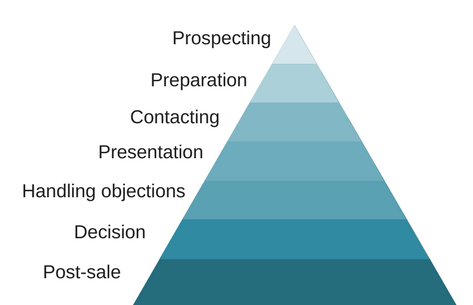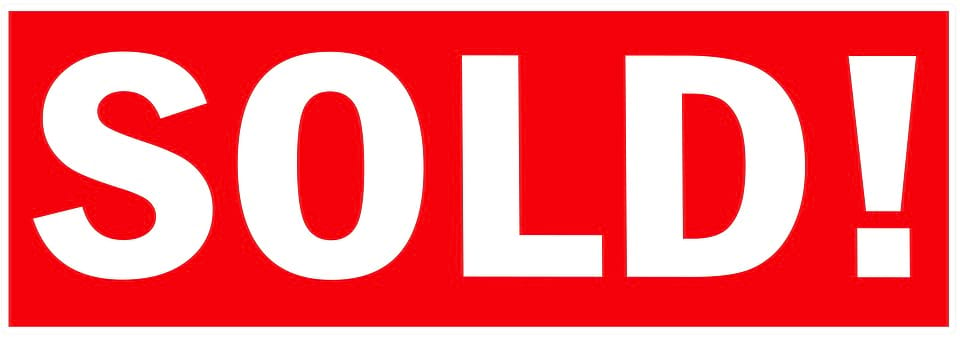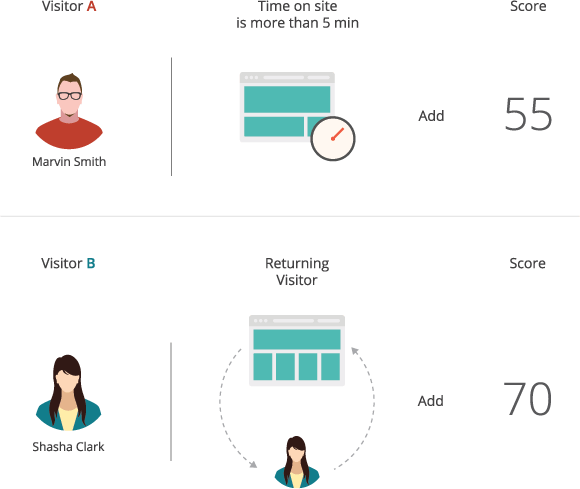How to Build a Sales Pipeline to Skyrocket Your Business
Are you not getting enough sales? How could that be that some of your competitors close numerous deals day in day out, month after month? What do they do that you don't? What is their secret? The answer is they have an established sales process and sales pipeline. So what is a sales pipeline and how do you get one?
A sales pipeline visually represents the steps of the sales process you need to take to sell your product or service. It shows you your current sales opportunities and the deals you can close. It can help you become more consistent and efficient in the way you sell. Also, with the help of a sales pipeline, you will be able to measure and predict your success.
Why should you spend time on making your sales pipeline?
Building a sales pipeline is vital for your business because you need to know who to reach out to, what your prospects are looking for when to schedule meetings with them, when to follow up, how to find out whether the relationship will last or not, and how fast the whole sales process goes. If you neglect to use a sales pipeline, you have very little or no statistics about how efficient your sales process is and whether you move your business in the right direction.
Most common types of a strong sales pipeline
When making a sales pipeline, you will need to include all of your sales cycle stages. If you do not know how many stages your pipeline should contain, it might be helpful to note that on average companies try to limit their sales process to five-seven steps.
Five stages of a sales pipeline
A typical five-stage sales pipeline can look as follows:
- Targets (people you’ve not contacted yet but you think may be interested in your product or service);
- Contacted (people you’ve called or emailed);
- Meeting agreed (contacts you’ve agreed to meet);
- Proposal sent (people you know. They need your product or service and have asked for a quote which you’ve sent them);
- Closed (people who bought from you).
Seven sales pipeline stages
Another commonly used model contains seven stages. They are:

- Prospecting (on this stage, a salesperson identifies a new lead and records his contact data);
- Preparation (at this point, your sales presentation should be developed and tailored to your potential customers’ particular needs);
- Contacting (a sales rep makes contact with a prospect. This can be a face-to-face meeting, a phone call, or an email);
- Presentation (by this time, you have already determined if the lead is interested in your product or service and can start demonstrating how the product or service meets the needs of a potential buyer. A free trial or a product sample may be provided to the customer);
- Handling objections (at this stage, a salesperson follows up to find out what stops a potential customer from making a purchase, etc.);
- Decision (your prospect decides to buy or not to buy);
- Post-sale (after closing the sales deal, your job is not done. To ensure the long-term loyalty of your customers, stay in contact with them. This can bring you potential repeat purchases and referrals).
In fact, these stages may be different for different industries, but the principle is the same.
Steps to create a strong sales pipeline
If you understood the main idea and the purpose of sales pipelines, we could get to further steps that are essential for building an effective sales pipeline.
-
Make in-depth research on your clients’ data
Do you know what kind of customer your business needs? When defining your ideal buyer, consider the industry, location, job title, goals, pain points, and challenges. Why is this important? When you make contact with your prospects, you need to present some value. And if you know their industry, pain points, etc., you’ll find it so much easier to show them precisely how they can benefit from your product or service.
-
Understand your custom life cycle
Since your interaction with your prospects varies depending on what life cycle stage they are in, you need to segment your database correctly. Depending on your business structure and needs, you may want to use all the life cycle stages below, only some of them, or create your own values.
The most common life cycle stages are:
- The subscriber stage (subscribers are those contacts who know about your business and agreed to hear from you from time to time);
- The lead stage (in comparison to subscribers, this type of your audience has shown more interest in your product or service. In other words, these people demonstrated that they matched some criteria needed to become your customers);
- The marketing qualified lead stage (just like the regular leads, MQLs have done something to indicate their interest, and they are engaged more deeply than your leads);
- The sales qualified lead stage (usually have specific questions and are even more sales-ready than MQLs. These leads match some basic criteria (e.g., budget, decision-making authority, etc.) to qualify to move forward in the funnel);
- The opportunity stage (this happens when a deal is already created);
- The customer stage (they bought from you);
- The evangelist stage (they are your true fans that can provide references, reviews, and testimonials).
-
Define your sales pipeline stages
A critical step on the way to building a strong sales pipeline is defining its stages.
To define them, imagine how a lead travels from prospect to customer. As spoken earlier, a sales pipeline may contain the following stages: “targets,” “contacted,” “meeting agreed,” “proposal sent,” “closed,” “post-sale,” and others. For more details, see the paragraph "The most common types of a strong sales pipeline" of this article.
-
Prepare content for each stage of your pipeline
Are you sure your content speaks to your buyers at every stage of their journey? Does it guide them forward? Before producing content, think what type of information your prospects need during each phase. What are their concerns? How can your content address these concerns?
Let's divide all content into three groups:
![]()
1) Awareness content
This type of content should be created for those who don't know your company and your product yet. At this stage, work on website content, social networks, blog posts, presentations, explanation videos, interviews. Your task is to get this info seen by new and potential customers.
2) Consideration of content
Once people have gotten to know you (provided their email address or a phone number, downloaded some app from your site, subscribed to a newsletter), it's time to show them how they can benefit from your product or service. During this stage, you can demonstrate your knowledge, work, and happy clients. Prepare white papers, persuasive testimonials from satisfied customers, reports, and various forms of social proof.
3) Decision content
There are two types of decision content:
1) Pre-purchase content (sales presentations, demos);
2) Post-purchase content (training courses, E-books).
-
Build Forecasts at every stage of your pipeline

A sales pipeline can also provide insight into how many deals your sales team expects to close in a given time frame and how close you are to reaching your revenue goals. To be able to use your sales pipeline for building forecasts, you need to know how to manage it in the right way.
Sales Pipeline Management
What is sales pipeline management?
Sales pipeline management is about tracking open opportunities as they move through your sales process. Proper pipeline management is one of the best ways to increase revenue because it helps you find the areas of weakness by analyzing the sales pipeline.
How to measure the effectiveness of your pipeline
Measuring the effectiveness of your sales process will help you determine the quality of your content, create more accurate sales forecasts, know whether you are at risk of missing your sales opportunities, and so on. But what should you measure?
Below are the numbers you need to know:
- New leads created per month by source (if we know where the leads come from, we can double down on the lead sources that are making it ring);
- Conversion rate from leads to opportunities (for instance, if we have a hundred leads and none of them are converting, we must reconsider the lead source, the content, etc.);
- Average won deal size (if you close two deals, one at $10k, another at $20k. The average deal size is $15k. Let's assume that you have a new revenue target of $150k next month. Since your average deal size is 15k, then you know that you should aim for ten deals);
- Average sales cycle length (to estimate expected close dates, you also need to know how long it takes to close a deal on the average);
- Win rate (you approached ten people and won one deal. So, to make two sales, you need to approach twenty people.)
Analyze results
Luckily, almost all CRM (customer relationship management) systems have built-in pipelines that can be easily customized according to your needs, which is particularly helpful when using a CRM for accountants. So you can analyze the progress of your prospects as you lead them toward becoming your buyers.

Review your pipeline and make improvements
To keep your sales pipeline healthy and understand what works well and what needs to be improved, regularly review it with your marketing and sales teams. Low on leads? Your marketing team needs to try something new. Taking too long to go from prospect to buyer? Your salespeople should try creating urgency or take some training on closing deals.
How to define the size of your sales pipeline
A sales pipeline size is indeed one of the key measures of a pipeline’s health, but how big should your pipeline be? Of course, there is no specific number, and you need to determine the ideal pipeline size by yourself.
Let’s assume that you need to win 1,000 deals per 12 months.
1,000 deals ÷ 12 months = 83 deals per month
4,000 proposals ÷ 12 months = 333 proposals per month
16,000 meetings ÷ 12 months = 1,333 meetings per month or 333 meetings per week
32,000 calls ÷ 12 months = 2,667 calls per month or 127 calls per day (if we have 251 working days in a year).
So if you have 50 people in your sales team, that translates to:
83 deals per month ÷ 50 reps = 2 deals per month
333 proposals per month ÷ 50 reps = 7 proposals per month
333 meetings per week ÷ 50 reps = 7 meetings per week
127 phone conversations per day ÷ 50 reps = 3 calls per day
Mistakes to avoid when building a sales pipeline strategy
Not identifying your decision-makers
You are probably wasting your valuable time and efforts if you are trying to sell to a person who has zero decision power in his/her organization. To find out who is the ultimate decision-maker, start with checking your prospect’s company website. Look for a page that lists the staff and executives. If there is no page that displays the staff list, check LinkedIn and the company's news releases. Many people think that they should talk to a president or an owner of the company. However, if you sell, for example, office supplies, the person responsible for making a decision is likely the office manager and not the owner of the firm.
Starting selling too early
Another common mistake is trying to sell too hard and too early. Instead of getting prospects to buy as soon as possible, focus on educating them and demonstrating what benefits they will get from buying your product or service.
Making your sales cycles too long
The length of a sales cycle is one of the most important indicators of a healthy sales process. If your sales cycle is too lengthy, but you want to close sales faster, you need to find ways to speed up the sales process. The easiest way is to check each stage of your sales pipeline and decide where you can add more human touch elements or automate some activities to save much time. The other essential key to achieving the sales cycle speed is knowing the reason why people should buy from you. When they have a clear understanding of the value you are offering, they need less time to make a positive decision for your product or service. Spend some time talking to prospects and customers. Try to find out what they like and dislike about your product, team, educational content you provide, and everything else. Make improvements.

Not tracking activities
To be able to drive improvements or stay motivated, you need to know exactly what's happening at each stage of your sales pipeline. A good CRM system can be a great help here.
Not prospecting for the future quarter
A lot of sales reps aren't big fans of cold calling, qualifying opportunities, or asking for referrals. As soon as they start getting more and more orders, they hope they'll never have to do prospecting again. However, most salespeople often forget that persistent prospecting got them to that point. As a result, when the quarter is over, and all sales are closed, they are confronted by reality: they have no one to sell to. Therefore, your sales team should spend its time not only closing every deal in a sales pipeline but also prospecting.
Not having a follow-up strategy
Your follow-up makes your prospect feel important and builds your relationship. Not following up results in leaving a lot of money on the table. So make sure you document all follow-ups using your CRM and complete the agreed actions for all clients and prospects. To ensure your follow-up emails look professional and consistent, use a free email signature generator to create a signature that reinforces your brand in every message.
Tips to build an effective sales pipeline
- Tip 1. Use automation
To save time, automate as many activities as you can. For example, you can automate your follow-ups.
- Tip 2. Find CRM to meet your requirements
Of course, you can manage your sales pipeline in an Excel spreadsheet, but the smartest way to do this is using a comprehensive CRM system. How does it help? With a CRM solution, you can track the status of every deal, prioritize leads, create various charts and reports, set automated reminders, and so on.
![]()
- Tip 3. Gather as much data as possible
The more you know about your potential buyers, the better service you can offer. As a result, they will be more loyal to you.
- Tip 4. Give the best leads to your best salespeople
By giving your best performers more or better-qualified leads, you can optimize for conversions.
Additionally, this rewards the highest-performing sellers and encourages them to close more deals in the future.
- Tip 5. Establish and track your lead score
How well do you know your leads? Who are they? How do they engage with your business? To keep them organized and save time, you need to determine how much a lead is interested in your product and if he/she is sales-ready. You can group the leads by the interest they shown in your product, their place in the buying cycle, and overall fit with your business.

- Tip 6. Validate ideal timing
According to studies, sales reps have more chances to win deals if they contact the lead within five minutes after he had shown interest. Have you already tested this with your sales team?
Conclusion
Building a successful sales pipeline is crucial for every business. When organized properly, it can help you become more consistent and efficient in the way you sell.
To achieve a healthy sales pipeline you should:
- design your sales process;
- develop the most excellent content that fits each stage of your sales pipeline;
- build an easy CRM;
- hire a good sales manager who knows how to train and motivate a sales team;
- measure, measure, and measure;
Happy closing!



